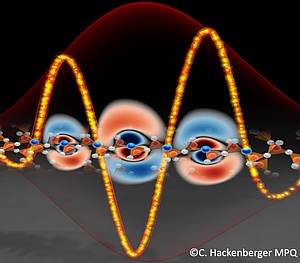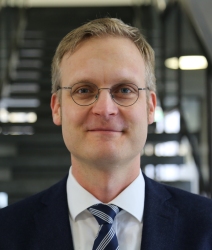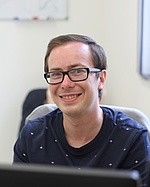Superfast Quantum Reversible Electronics
The discovery of a semiconductor’s ability to rectify electric currents in 1874 marks the starting point of modern electronics. Ever since, the ability to exert control over currents and electronic signals inside of a solid propels the development of everything from the simplest electric circuitry to the most elaborate Gigahertz clock rate computer processors.
From the standpoint of an individual electron however, state-of-the-art technology functions rather phlegmatic. Even the fastest demonstrations of ultrafast electronic switching are incoherent mass events lasting some 4-5 orders of magnitude longer than the attosecond speed with which an electron can switch between localized and conductive states in response to an electric field. In attempt to bridge this gap, attosecond spectroscopy recently enters the realm of condensed phase physics and in a set of first studies we could real-time resolve electron dynamics in the band-structure of solids. At this time domain boundary between quantum and classical behaviour it is possible to observe and control the dynamics of electrons coherently in the few femtoseconds after excitation before they dephase and loose coherence.
In our lab, attosecond XUV pulses and synchronized ultrashort near- and mid-infrared waveforms will serve to trigger and observe sub-femtosecond-to-few-femtosecond carrier dynamics in solids and to study the resulting coherent modifications of the optical, electronic and magnetic material properties. Steering electron dynamics in solids in this regime, before dissipation and decoherence occur, promises to allow switching of electronic as well as magnetic properties with both unprecedented speed and ultralow energy deposition into the material. The laws of petahertz optoelectronics appear fundamentally different from gigahertz electronics. We aim to pinpoint exactly what they are and devise ways towards future optoelectronic and spintronic operational principles in the Petahertz regime.
Selected Publications:
Attosecond band-gap dynamics (Science 2014)
Controlling dielectrics with the filed of light (Nature 2013)
Attosecond nonlinear polarization and light–matter energy transfer in solids (Nature 2016)
Attosecond correlation dynamics (Nat. Phys. 2017)
Institut of Experimental Physics
Graz University of Technology
Petersgasse 16
8010 Graz
Austria
Group Leader
Martin SCHULTZE,
Univ.-Prof. Dipl.-Phys. Dr.rer.nat.
Tel.: +43 (0) 316 / 873 - 8142
Fax: +43 (0) 316 / 873 - 108142
|
|
| |
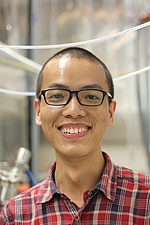 Zhenhao WANG wang@tugraz.at +43 (316) 873-8144 |
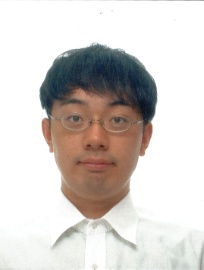 Kazma KOMATSU kazma.komatsu@tugraz.at +43 (316) 873-8144 |
